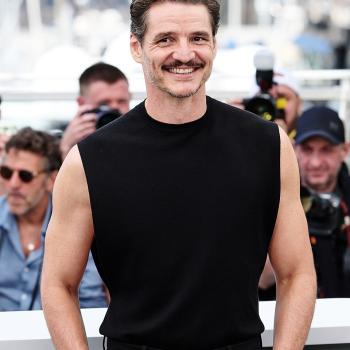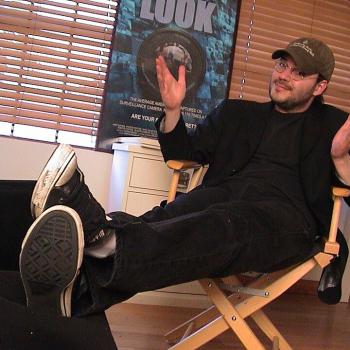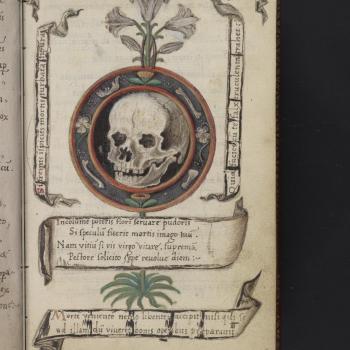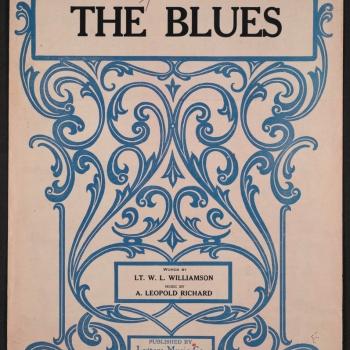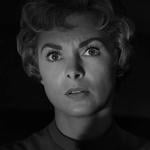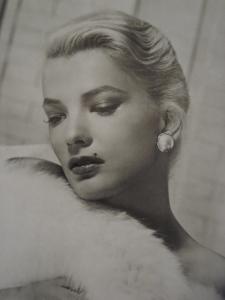
Source: Flickr User Jon Rubin
License
The thesis of John Cassavetes’ Minnie and Moskowitz (1971) is that most people are a bit looney. “Normal” is a comforting lie we tell ourselves—an implicitly understood charade masking dark secrets or, at best, harmless idiosyncrasies. Most conversations between people are but monologues given in impolitely staked-out turns. We see this in the film’s opening, when Seymour Moskowitz (Seymour Cassell) and his bushy blonde mustache sit across from a slack-jawed drunk of a fellow diner named Morgan Morgan (Timothy Carey). Morgan won’t stop talking about his dead wife and how he knows things (like that his wife is dead). Moskowitz, uncharacteristically quiet in this opening scene, tries out some levity: “do you like jokes?” Morgan slams the table and knocks over some silverware, screams that he hates jokes and he doesn’t want to hear them. Soon enough, he takes a hotdog out of Seymour’s hand and tells him he’s a good egg. “By the way, you know my wife died?”
On the face of it, that’s all very depressing, like suspecting that most conversations between human beings are no better than failing first dates. It’s not, however, that simple. As deflating as this reality may be, Cassavetes always plays these scenes for laughs. When Minnie (Gena Rowlands) goes on a blind date with Zelmo Swift (Val Avery), for example, we witness at once a pitiable excuse for a man screaming at a woman who has barely spoken a word and a clown. From the moment they sit for lunch, Zelmo talks about nothing but the amount of money he has, how pretty Minnie is, how well she listens. In reality, Swift does little more than screech about his dead wife, his love of poetry, and his romantic failures. When Minnie, hiding behind sunglasses as she does when feeling awkward, lets him down gently, he explodes: “Blondes! What is it with you blondes? You all have some Swedish suicide impulse, huh?” The man may be frighteningly brash. He’s also pathetic, a joke who discusses his love of Keats in the same breath that he condemns business, announces his wealth, and speculates on the genetic predisposition of blondes.
It’s this background that makes the unflattering love between Minnie and Moskowitz possible. He is an outgoing freak who, as Minnie notes, talks only about cars, food, and money. She is a romantic of middle-class extraction recently freed from a relationship with a married man. They meet when he, working as a valet, sees Zelmo berating her after their date. He, as usual, picks a fight and finds himself beaten down. They escape in his pick-up truck, destined to chow down on some hot dogs (the only thing he seems to eat).
Their “relationship” is turbulent at first. Moskowitz chases her down with his truck when she runs out on their first “date.” She’s ashamed of him when they meet associates of hers outside a cowboy bar, where her acquaintances have come “to see how the other half lives.” But there are tender moments too. He plays music from his car radio and dances with her in the parking lot when she’s too embarrassed to go inside. She smiles after he shaves off his mustache in a huff, trying to make up for an outburst (and yet another beating at the hands of another man). She admires the practicality of his speech, so different from what she’s used to from men at the museum where she works. He tries ice cream for her, though only after screeching, asking where she is. They share a love of Bogart movies, even if she has lost faith in the over-ambitious love sold by cinema. Minnie keeps hiding behind sunglasses. Moskowitz never stops droning on about cars and the price of hot dogs.
This probably all sounds a bit hard to watch—screaming and abuse played as love. Cassavetes’ style both underlines this difficulty and allows the material to transcend it. Minnie and Moskowitz showcases his signature style in which every shot feels surreptitious, zoomed, and voyeuristic. The tightened frames create an uneasiness that fights against the comedy. At the same time, this approach adds to the “reality” of the romance before our eyes. We feel like peeping toms who just happen to have an opportunity to see two lives unfold. Cassavetes’ jarring cuts emphasize this feeling. Over and over again we jump from scene to scene without resolution, commanded to imagine how the rest played out, as if it were real life and followed the inexorable (and strange) logic of human interaction and blossoming love.
Cassavetes ends with a wedding and kids—this is, after all, a romantic or screwball comedy, one devoted to how real people find real love. I imagine many might be very uncomfortable with it, might even call Moskowitz abusive or Minnie a fool. Perhaps they are. But they’re also the right kind of crazy for each other, not because they are particularly odd, but because they are eminently normal. Is that troubling? Perhaps. But for one brief moment, we see two people talk with rather than at each other, get a glimpse into the troubled beauty of love between imperfect human beings. It ain’t Bogart, but it sure is grand, a testament to the dignity and transcendence of life itself, grotesque, squalid, and annoying as it so often is.




